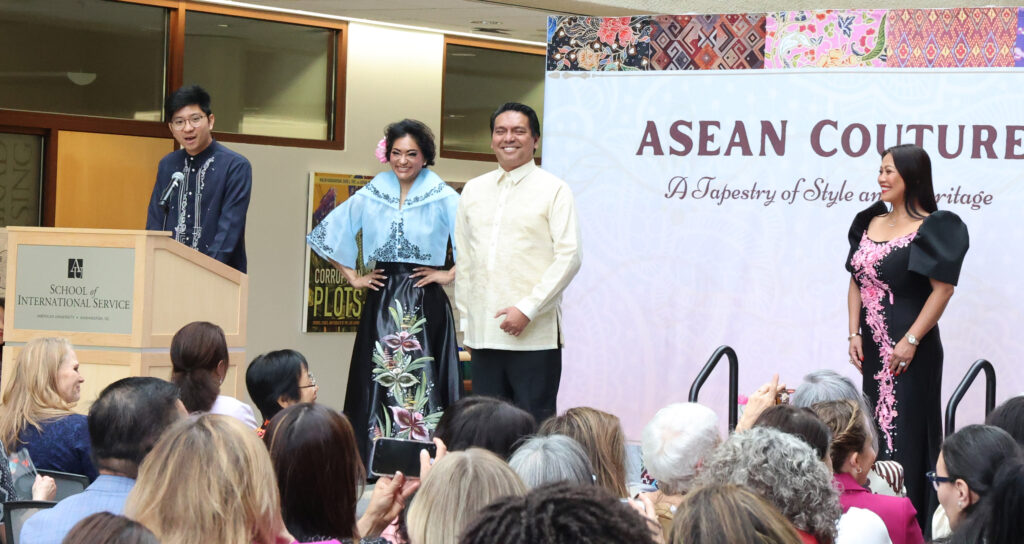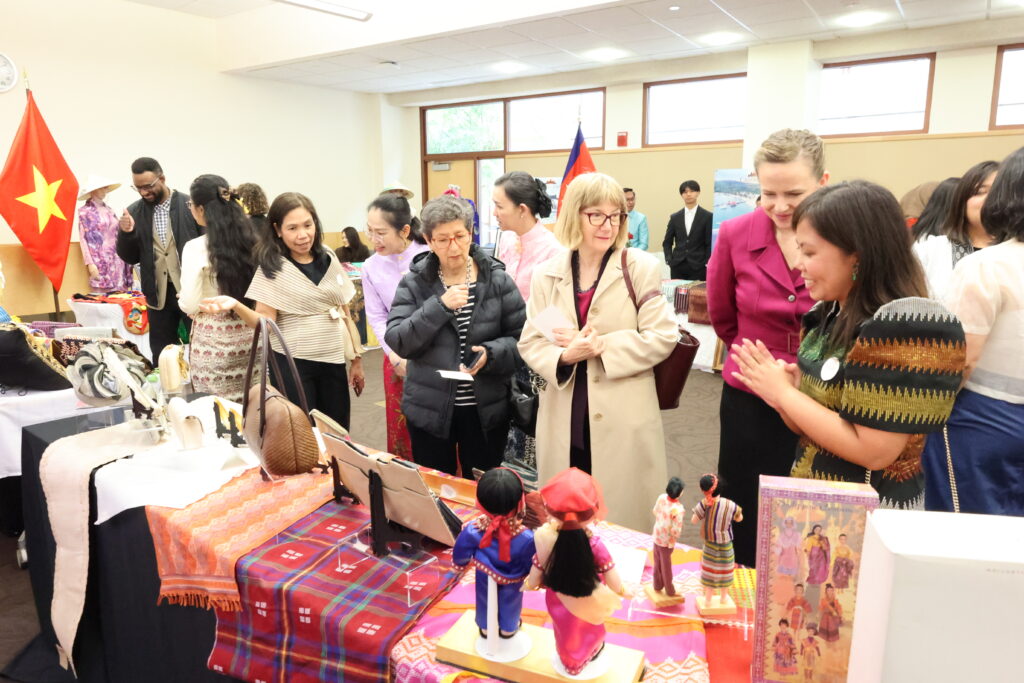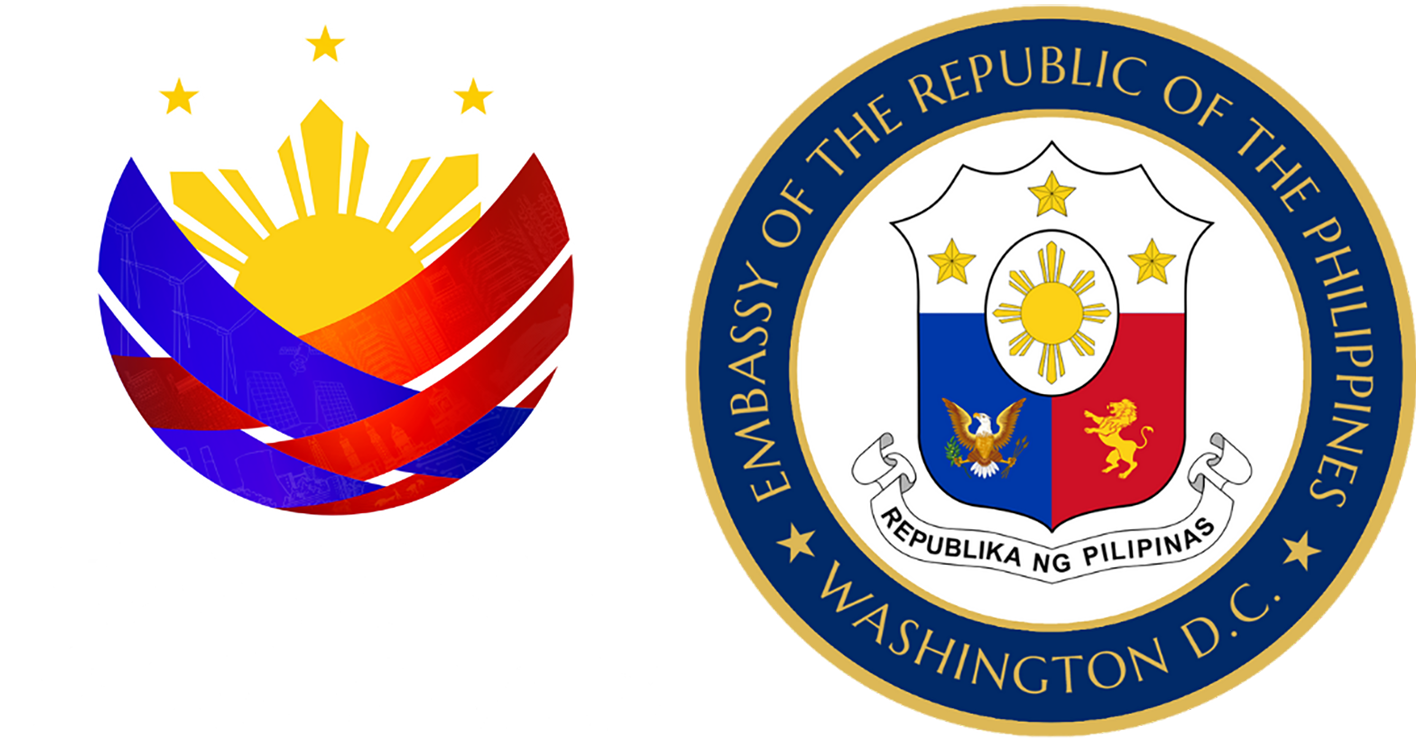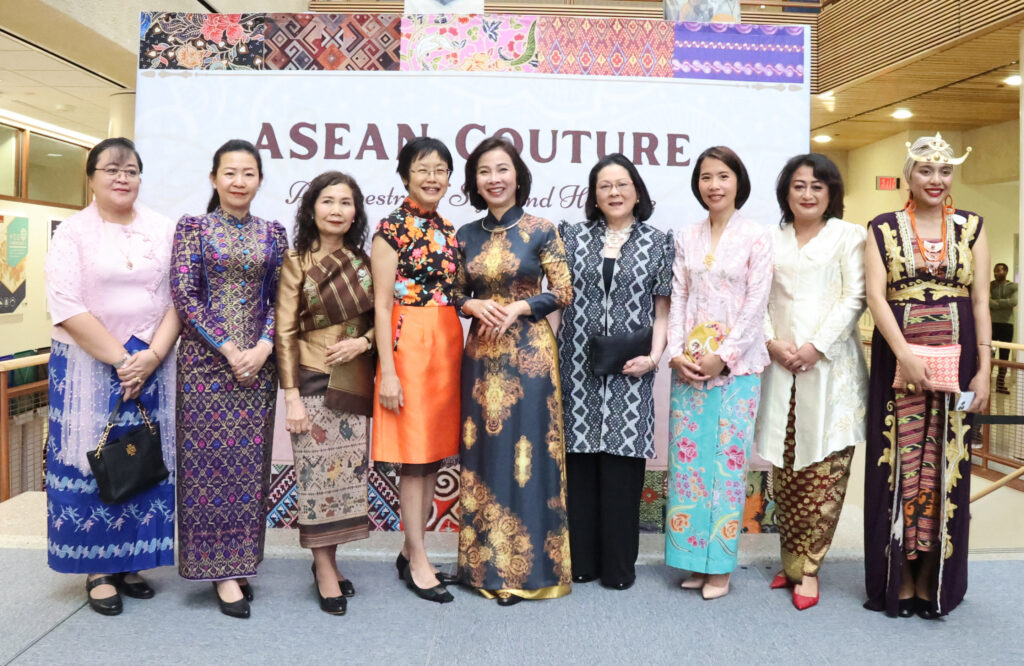PRESS RELEASE
WDC-38-2025
28 May 2025
Embassy Press and Information Section
WASHINGTON D.C. – The ASEAN Spouses Circle (ASC) in Washington D.C., in partnership with the American University (AU), hosted the ASEAN Couture: A Tapestry of Style and Heritage on May 22, 2025 at the Prince Salman Grand Atrium of the American University – School of International Service.
This cultural showcase brought together the ten ASEAN member states to celebrate their rich and diverse traditions through fashion. The event welcomed ASC members and members of the diplomatic corps, cultural partners, AU academia and students, and the general public.
Opening remarks were delivered by Mrs. Lui Soo Fen, ASC President and spouse of the Singaporean Ambassador to the United States, H.E. Lui Tuck Yew. This was followed by an address from Ambassador Piper Campbell, Chair of the Department of Foreign Policy and Global Security at American University.
The heart of the program was a fashion presentation by representatives from all ASEAN embassies, each highlighting their country’s traditional attire and the cultural stories behind them. From intricately woven fabrics to garments with historical significance, each presentation offered a unique perspective on national identity and regional artistry.
The Philippine Embassy featured a trio of iconic Filipino garments that embody the nation’s colonial history, craftsmanship, and cultural resilience:
- Maria Clara – This traditional women’s ensemble traces its origins to the Spanish colonial period and was named after the fictional heroine of José Rizal’s Noli Me Tangere. Designed to reflect modesty, virtue, and grace, the ensemble showcases intricate embroidery and layering, capturing the elegance and refinement of Filipina identity in the 19th century.
- Barong Tagalog – The Barong Tagalog is the formal national attire for Filipino men. Made from piña or jusi fabric, the barong is traditionally worn untucked over an undershirt, adorned with delicate embroidery along the chest. It is worn today in both ceremonial and official contexts across the Philippines.
- Terno – Evolving from the Maria Clara during the American period in the early 20th century, the terno merged Western silhouettes with native aesthetics. It became a symbol of Filipina sophistication, later popularized internationally by figures such as former First Lady Imelda Marcos.
Guests also enjoyed interactive booths from each ASEAN country, showcasing traditional attire, textiles, and accessories, such as the Kebaya—a traditional outfit commonly worn in Brunei, Indonesia, Malaysia, Singapore, and Thailand.
The event served as a powerful reminder of the region’s shared heritage, artistic excellence, and the continued importance of cultural diplomacy. The Embassy thanks its models Ms. Mekhla Jordan, Ms. Janet Cersley, and Mr. Edward Logan for promoting our Philippine attires.###
PHOTO RELEASE
WDC-146-2025
28 May 2025

PHOTO RELEASE
WDC-147-2025
28 May 2025

PHOTO RELEASE
WDC-148-2025
28 May 2025


